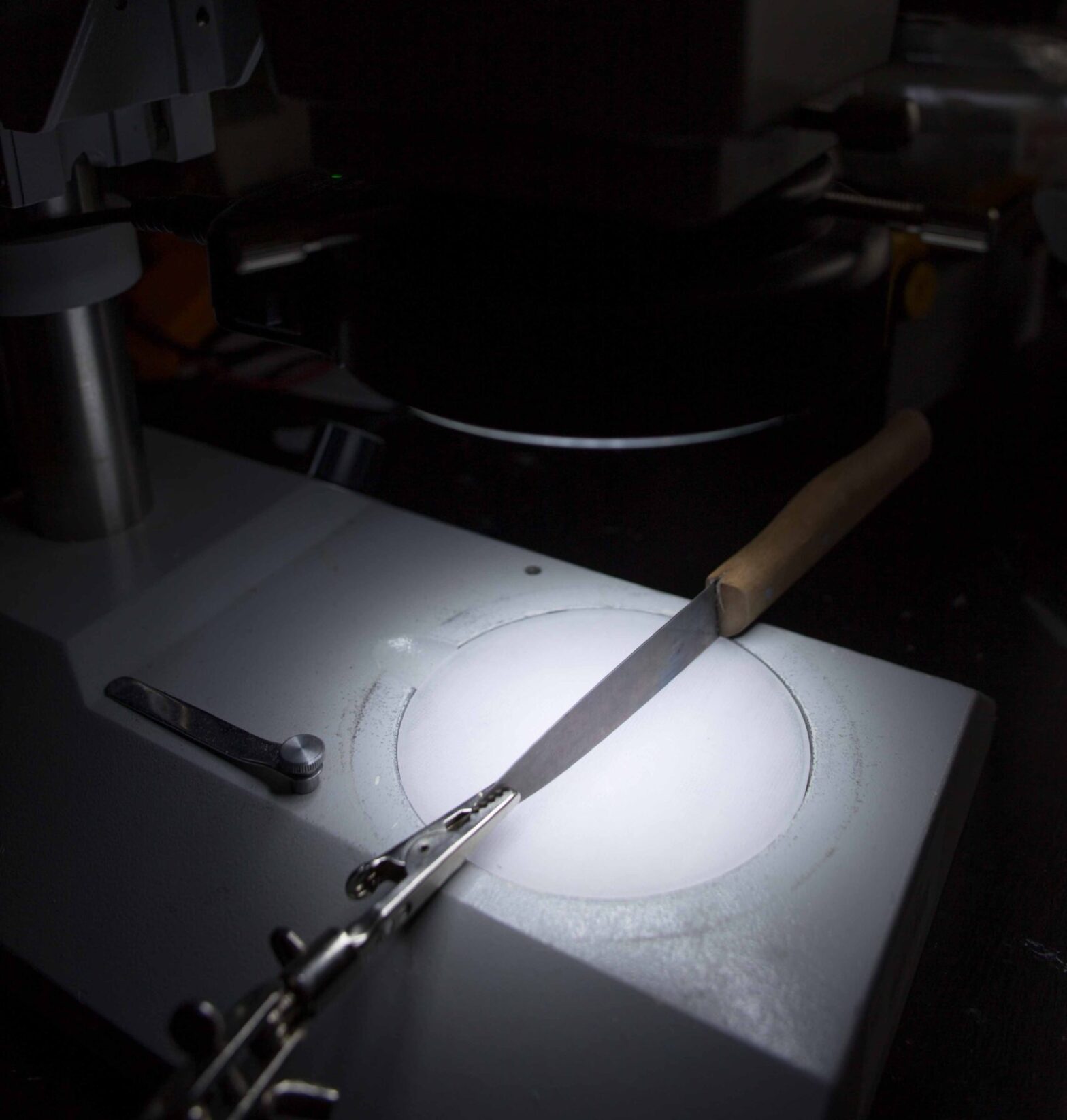Knife blades become dull with the time of their use. On the one hand, the steel wears out (nicks) and on the other hand, the finely ground phase bends. Both depend primarily on the type of use and secondarily on the alloy of the steel, its hardening and the grinding angle. The grinding angle is basically dependent on the steel alloy and must be maintained during regrinding.
I would like to give a microscopic view of dull and resharpened knives here.
Two simple but good kitchen knives from Dick and Herder are used. Once from stainless steel and once from carbon steel. Knives made of carbon steel can be ground finer, have a higher hardness (HRC), but are more brittle and rust. The images were taken with a Zeiss STEMI SV8 stereo microscope and a Canon Eos 6D camera. A simple LED ring light was used as the light source. I aligned the blades vertically with the blade pointing upwards and fixed them with a helping hand from electronics .
I used the following knives for the illustration
Both knives with dull blade after several weeks of use and sharpening
On both knives are clearly visible nicks, scratches and material removal. Note the reflection of light on the upper edge. This is a clear sign of a blade that is not perfectly straightened. After sharpening, both blades exhibit a smooth and straight phase (clearly more prominent on the carbon steel knife). In particular, the reflection of the phase is no longer visible after the blade is removed.





